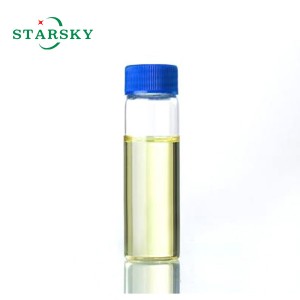Cobalt acetate tetrahydrate CAS 6147-53-1
Cobalt(II) acetate tetrahydrate has a variety of uses, including:
1. Catalyst: Cobalt(II) acetate tetrahydrate is used as a catalyst in chemical reactions, especially in organic synthesis and polymerization processes.
2. Pigments: Cobalt acetate can be used to produce cobalt-based pigments for ceramics, glass and paints.
3. Nutritional supplement: In some cases, cobalt acetate is used as a source of cobalt in animal feed, which is an essential trace element for some animals.
4. Electroplating: Cobalt(II) acetate tetrahydrate can be used in electroplating processes to deposit cobalt onto various substrates.
5. Research: Cobalt acetate is commonly used in various chemical and biological studies in laboratory research.
6. Dyes and stains: Cobalt(II) acetate tetrahydrate can also be used to prepare dyes and stains in various industries.
Packed in 25 kg per drum or based on customers' requirements.

Cobalt(II) acetate tetrahydrate CAS 6147-53-1 should be stored under the following conditions:
1. Cool and dry place: Please store it in a cool and dry environment to prevent moisture absorption, which will affect its stability.
2. Airtight Container: Store it in an airtight container to keep out air and moisture.
3. Keep away from incompatible materials: Keep away from strong acids and oxidizing agents as it may react with them.
4. Label: Make sure containers are properly labeled with the chemical name and any hazard information.
5. Safety Precautions: Store in a safe place away from direct sunlight or heat sources.
Yes, cobalt(II) acetate tetrahydrate is considered hazardous. It contains cobalt, which can be toxic in certain forms and concentrations. Here are some key points about its hazards:
1. Toxicity: Cobalt(II) acetate tetrahydrate can be harmful if ingested, inhaled, or absorbed through the skin. They may cause breathing problems, skin irritation, and other health problems.
2. Carcinogenicity: Cobalt and some of its compounds have been listed as possible human carcinogens by some health organizations, especially for long-term exposure.
3. Environmental Impact: Cobalt(II) acetate tetrahydrate may be harmful to aquatic life and may pose risks to the environment if not properly handled and disposed of.
4. Safety Precautions: When handling cobalt acetate tetrahydrate, always use appropriate personal protective equipment (PPE) such as gloves, goggles, and a mask, and work in a well-ventilated area.


When transporting cobalt(II) acetate tetrahydrate, always take the following precautions:
1. Regulatory Compliance: Ensure compliance with local, national and international regulations regarding the transport of hazardous materials. Cobalt(II) acetate tetrahydrate may be classified as hazardous materials, so please check relevant guidelines.
2. Proper Packaging: Use appropriate packaging materials to ensure moisture-proof and prevent any potential leakage. Use sturdy and safe containers to prevent damage during transportation.
3. Label: Please clearly label the packaging with the chemical name, hazard symbol and any necessary handling instructions. If applicable, please indicate the corresponding UN number (cobalt compounds may fall into a specific classification).
4. Documentation: Prepare and attach all necessary shipping documentation, such as Safety Data Sheets (SDS) and any required hazardous materials declarations.
5. Temperature Control: If necessary, ensure that the method of transportation can maintain appropriate temperature conditions to prevent the compound from degrading or changing.
6. Avoid Incompatible Materials: Ensure that Cobalt(II) Acetate Tetrahydrate is not transported together with incompatible materials such as strong acids or oxidants.
7. Training: Ensure that personnel involved in the transportation process are trained in handling hazardous materials and understand the risks associated with Cobalt(II) acetate tetrahydrate









